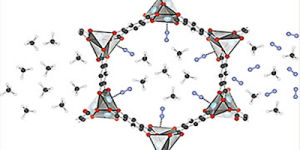Researchers discover chemical element boron species plays a key role in enhancing catalytic activity.
A study by a team of University of Oklahoma researchers has been featured in Cell Reports Physical Science, an open-access journal highlighting cutting-edge research in the physical sciences.
The study, “Cooperative roles of water and metal-support interfaces in the selective hydrogenation of cinnamaldehyde over cobalt boride catalysts,” explores the role of water in the selective hydrogenation of carbonyl over alkene bonds. Utilizing cobalt and cobalt boride catalysts, OU researchers analyzed the hydrogenation of an organic compound called cinnamaldehyde. They discovered that the chemical element boron species plays a crucial role in enhancing catalytic activity and selectivity.
“We want to mimic nature’s enzymes and learn more about what we can create synthetically. Our findings could have far-reaching implications in the production of industrial chemicals,” said the project’s co-investigator, Daniel Resasco, Ph.D., a professor in the School of Chemical, Biological and Materials Engineering, Gallogly College of Engineering.
During thermal treatments, the boron species undergo a process called exsolution, where they separate from the bulk phase and accumulate on the catalyst’s surface. This enrichment leads to the formation of acidic species, which boost the activity and selectivity of carbonyl bond hydrogenation by three and two times, respectively.



